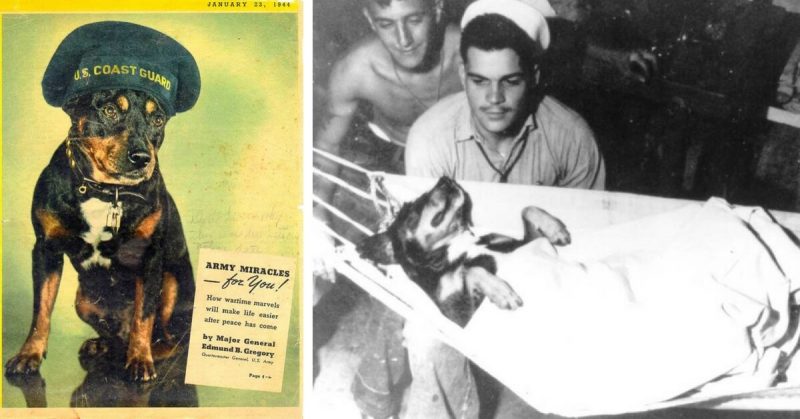The Coast Guard Cutter Campbell steamed out from New York in the winter of 1937. Like most peacetime cutters, she was patrolling the American coast, both for national defense and lifesaving mission. On the first day of their patrol, the captain addressed his crew, explaining the seriousness of their missions, and that he expected all of them to be well behaved, hardworking, and disciplined. What he didn’t expect, though, was to be greeted by a small brown dog barking at him from behind the crew.
The night before, one of the crew, Boatswain’s Mate “Blackie” Roth had gotten his girlfriend a dog, hoping to make his absence less painful. But he hadn’t taken into account that her landlord had a no pets policy, and she couldn’t take the small brown ball of fur. Stowing the pup in his duffel bag Roth sneaked back on board, just before 8 PM. He and the other men decided that this small mutt would be their new mascot and that he needed a fitting salty sailor name. After much debate, they settled on Sinbad the Sailor.
The next day, during muster, while the captain was addressing the crew, Sinbad made his presence known. The Chief Boatswain’s Mate, a very respected position on board a cutter, pleaded with the captain, asking that Sinbad be allowed to stay on board. The captain was a kind fellow, and like all sailors had a soft spot for those trapped at sea. He allowed Sinbad to stay on board, with the warning that he was the crew’s responsibility, and that he would have to learn to behave himself.
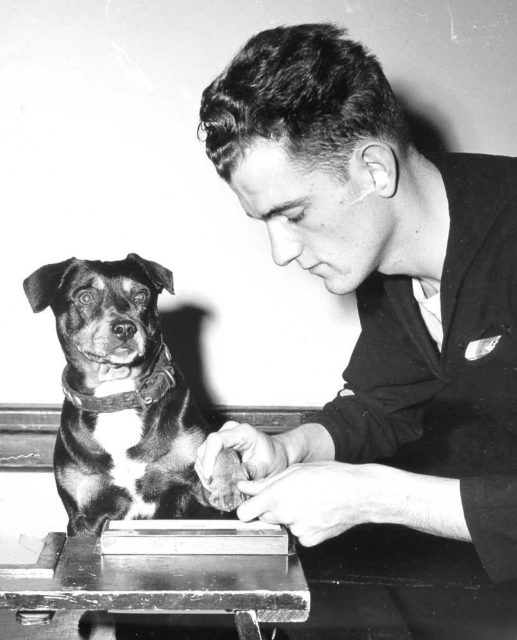
From that point on Sinbad was a member of the ship’s crew. He would often share racks with other sailors, and quickly learned the daily routine of the ship. At mess times he was always found near the galley, knowing that food was coming soon. Men would share their coffee with him proving that he was a true sailor, for what old salt doesn’t like a large cup of hot black coffee?
But Sinbad, like most sailors, loved shore leave above all else. And in 1940, while the world was falling into the chaos of the Second World War, this almost caused an international incident.
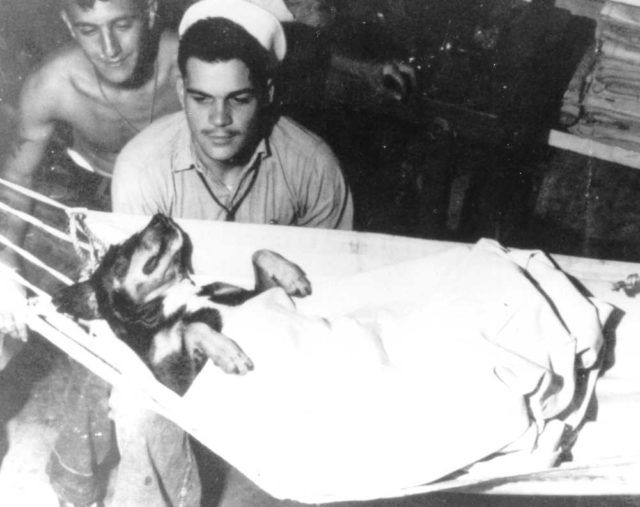
Greenland was previously a Danish territory, but with Denmark overrun by the Nazis, it was being patrolled and watched by the United States, hoping to keep it out of German hands. The Campbell was sent to help secure diplomatic ties with the Greenlanders and Danes living there.
Greenland was sparse, with few native resources. The locals mainly fished, and reared sheep for their livelihood. When Sinbad got his feet on dry land he quickly discovered the pastures, and a herd of sheep out grazing. He learned that they were great fun to chase, and this became his daily activity for almost a week.
While Sinbad thought it was harmless, the locals were less happy with it. Some sheep died from exhaustion, and others were too nervous to go out grazing. A local farmer had tracked Sinbad back to the Campbell, and they sent a letter to the captain demanding that Sinbad be killed. But the captain, being both a sailor and good Coast Guard officer, knew that that was far too severe a punishment. Instead he issued orders to his crew, that Sinbad was never to set paw on Greenland ever again. Upon reading the notice, the crew all had a good laugh, they would jokingly tease Sinbad about shore leave for the rest of their voyage in Greenland.
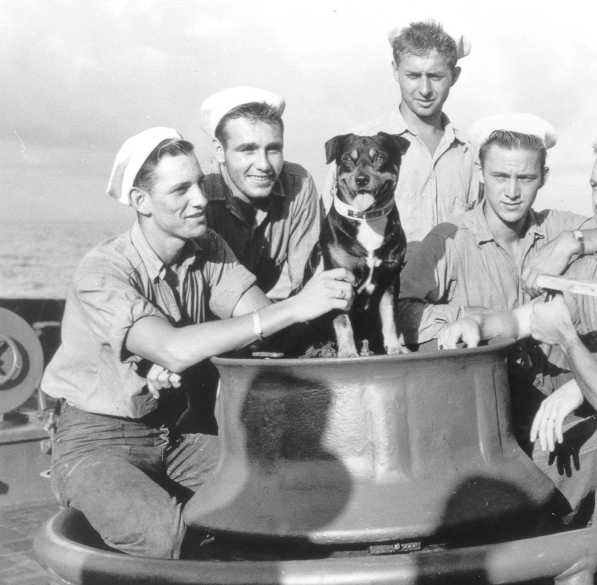
But when war came the Campbell was transferred to the Navy, as all Coast Guard Cutters were. Sinbad’s life changed drastically, the entire crew became tense, and gun drills became more common. Shore leave was now short, and patrols were long.
While protecting a convoy in the Atlantic the Campbell came into action against many German submarines. They hounded the American and British shipping convoys bringing much-needed supplies, food, and even personnel to the embattled island nation. During one of these battles, Sinbad proved his true mettle at sea and earned much acclaim.
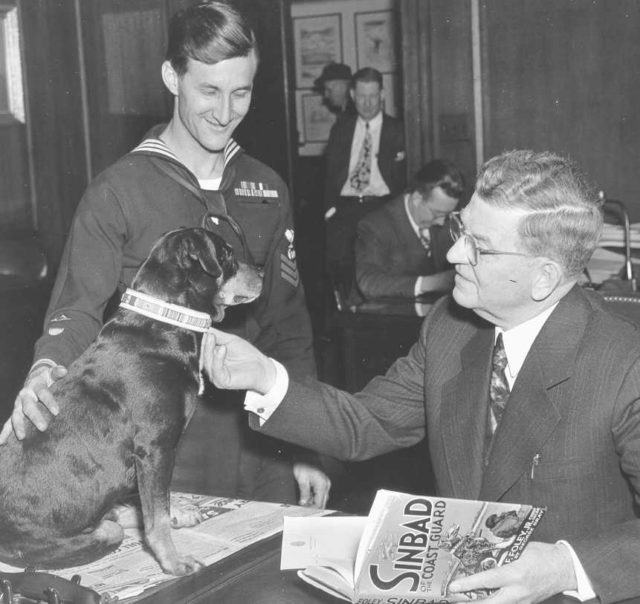
On the 22nd of February, 1943, the Campbell was protecting a convoy in the North Atlantic. During a light drizzle and poor visibility, a German submarine unleashed a hellish barrage on the stern of the convoy. One torpedo struck a Norwegian steamer, crippling her, and send her crew into the ocean. The Campbell responded, hoping to rescue their fellow sailors. But the steamer was just bait, and the sub fired another torpedo, narrowly missing the Campbell. The Cutter found the surfaced German sub and sped towards her, forcing her to crash dive.
The chase went on all day, the Germans popping up, trying to attack, but being forced back down by the Campbell and other allied ships. The Cutter rejoined the convoy, but everyone on board was tense, knowing that danger lurked just beneath the surface. At 7:26 PM a periscope was spotted.
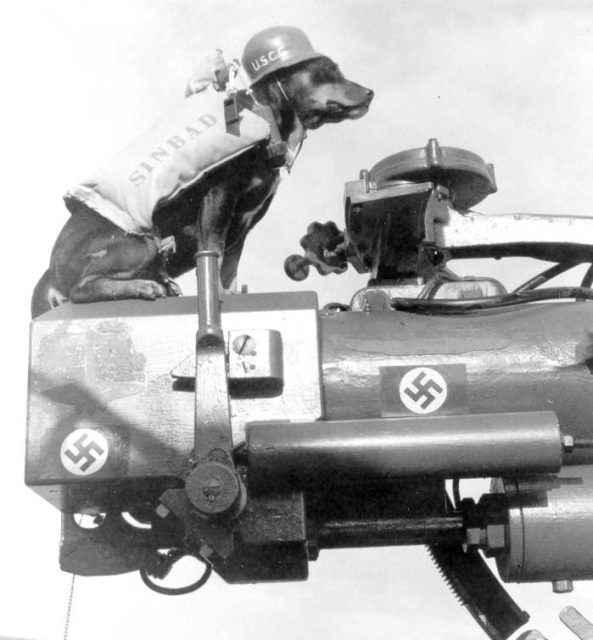
The cutter sped towards the suspected U-boat. Closing, she unleashed a string of depth charges, sending huge plumes of water into the sky. But it was the ship itself which destroyed the sub, colliding with her after her depth charge pass. The sub was destroyed, her crew escaping to the surface.
The Campbell’s crew, being both sailors and lifesavers lowered their rowboats to pick up the survivors. But while doing this, they realized the extent of damage that their ship had taken in the impact. A large gash been ripped in the Campbell and water was pouring in with each rolling wave. They lowered a collision mat and began repairs.
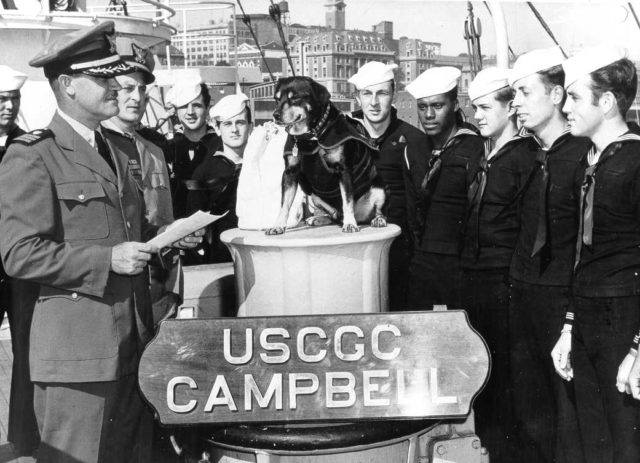
Half of the crew was transferred to a Polish destroyer, the Burza, and Sinbad’s position came into question. The captain decided that Sinbad would stay onboard. The ship had stayed safe for his entire tenure as her mascot. The crew knew he was good luck, and the captain agreed. What’s more, Sinbad had stood on deck during the whole of the battle, standing next to his shipmates throughout the action. He had truly earned his place on the ship, and no one could that away from him.
The Campbell continued her wartime service, with Sinbad on board the entire time. He continued to lead a somewhat checkered life on board, and got in trouble occasionally. He was made Chief Dog, after serving as Dog 1st Class for six years. And the captain organized a large ceremony when they returned to their home port.
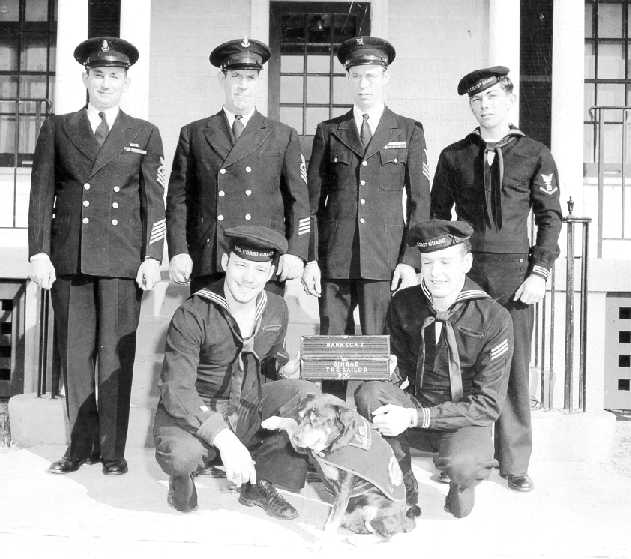
The party proved larger than expected, at this point the newspapers had caught wind of the brave little pooch, and there was photographers everywhere. Sinbad was ordered to stand still and look smart for picture after picture, but he eventually tired of this. He bolted down the gangplank and across the dock. He was officially Away Without Leave (AWOL), a very severe offence on a ship. He was brought before the Captain’s Mast, and reduced in rank. The whole crew took pity on him, but Sinbad was happy to be back among the lower enlisted crew again, and away from the cameras.
After a total of 11 years at sea, Sinbad was finally ready for a shore detail. He was officially transferred to the Barnegat Light Small Boat Station. He spent the rest of his career there, still a Dog 1st Class, until he passed away on the 30th of December, 1951. He was buried with honors at the base of the flagpole at Barnegat station.
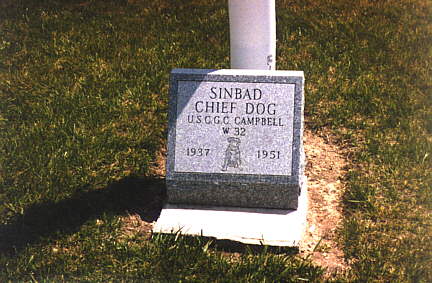
Sinbad, the Coast Guard Sailor, was one of the most important aspects of life on board the Campbell. He won the heart of everyone he met, and the entire rallied around him.
During his 11 years at sea, he almost caused two international incidents, one in Greenland, the other in Casablanca. He also helped fight submarines, drank whiskey and beer, and did his duty to cheer up every sailor he met. Once at Barnegat, he continued this service until his last days.
